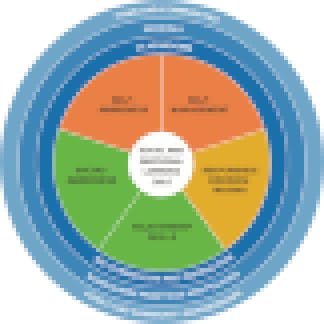Everything about Ray, from his seat choice to his body language in class, indicated that he didn’t want to be noticed. And for the first half of his 9th grade year, he did enough to pass, earning Cs and Ds. Ray was the kind of kid who could easily have slipped through the cracks.
But Ray taught me an invaluable lesson about buzzwords, adaptability, and unintended results. Any connected educator has heard buzzwords like flipped classroom, gamification, social-emotional learning (SEL), differentiation, and personalized learning. And while these may just seem the latest bright and shiny objects to capture our trending eyes, if we step back and examine the pedagogy supporting these “buzzwords,” we can see the importance they have in reaching our students in both in-person and hybrid-distance learning classrooms.
When Ray was my student, I decided to test out gamifying my Greek Mythology Unit by creating a new Edmodo class, chunking the content into small groups, and providing my students with a paper game board to support the blended learning within the unit. Some students criticized my game design (as it didn’t have the action or polish of games like Fortnite or Clash of Clans), but Ray took off like a rocket. He autonomously and expertly completed the tasks on the gameboard, flying through levels to complete the game first, and earned an A for marking period.
The day grades were due, I pulled Ray aside at the end of the class and lauded his accomplishments.
“Thanks, Mrs. Baker. That was my first A,” he said humbly nodding his head and avoiding eye contact through his hair.
“Oh, don’t worry about that. Freshman year is always a tough transition and you just had a slow start…” I started to rationalize.
Ray interrupts me, “No, Mrs. Baker. That was my FIRST A. Ever.”
When I designed the gamification unit, I had no idea the effect it would have. If I want to teach my students effectively in any learning environment, I have to be willing to experiment with methods that may be out of my comfort zone. And during this time of hybrid and distance learning, being flexible is paramount as we shift in-person learning experiences to online formats. One method of instruction will not reach all students, but many modes of instruction can reach many students.
Ray’s story is a reminder that we are not merely teaching content: we are teaching young humans how to be better.
Why SEL?
Social and emotional learning is learning about life and how to function as a member of society. SEL is promoted every day by educators and students as they focus on honing core skills like self-awareness, self-management, responsible decision making, relationship skills, and social awareness. When students lack these skills, they become disconnected, disaffected, and potentially disruptive. Classroom learning and management all begin with relationships, and SEL can guide the relationship and community building process. In this light, SEL should not be reserved for special projects but instead woven into the daily culture of both the in-person and virtual classroom.

How to Get Started with SEL
Teachers can emphasize SEL with their students from day one of the school year by flipping their class expectations and beginning with activities that get students collaborating while also practicing classroom routines. Trust and community culture need to be established before students are ready to share personal information.
CASEL recommends three signature practices for your daily instruction:
- Welcoming Activities, Routines, & Rituals that build community and connect to the work ahead.
- Engaging Strategies that offer opportunities that vary in complexity for individual and collective learning.
- Optimistic Closures that highlight individual and shared understandings, provide a sense of accomplishment, and support forward-thinking.
To support student self-efficacy, utilize a consistent format for your lessons and class procedures. The daily agenda should be posted in an easy-to-find location in both your physical and virtual classroom.
Rather than presenting your list of class expectations and sending home a paper for parents to sign, flip the experience by creating a short 15-minute screencast that provides an overview of the course and explains the procedures to be followed throughout the year. The video can be delivered to students via a Post to your Edmodo class or as an assignment. You can also check students’ understanding by having them answer follow-up questions on paper or an Edmodo Quiz. Invite parents to participate in this activity so that they can become part of your classroom community too.
Games are a fun way to break the ice and many in-person games can be adapted to an online format. Play a game of “This or That?” with low-stakes opinion questions such as, “Hot dogs or Hamburgers?” “Beach or Mountains?” “Dog or Cat?” Students can stand up at their seats to signify their answer and look around the room to see who made the same selection. You can try this on Edmodo by starting a threaded conversation in the Edmodo class: The teacher posts the “This or That?” question as an Edmodo Note or Poll, and students reply with their preference and discuss with classmates in the post comments. You can play the “This or That?” game in a Zoom meeting by asking students to draw their preference, hold up the paper to the camera, and continue the conversation in the chat area.
Building a Learning Community on Edmodo
While focusing on social and self-awareness skills, think of the online space as a walled garden that needs to be tended: seeds to be planted, watered, and supported as they grow. Your students also need to be encouraged to interact, both in a face-to-face learning environment and a virtual one.
Create a Personal Learning Network (PLN) experience for your students, and minimize your time and energy posting to multiple classes by grouping all class periods of the same level in one Edmodo Class. This provides students with an online PLN experience and an opportunity to reinforce digital citizenship skills as they interact with students they may not see face-to-face.
With Edmodo, teachers can also use small groups within the large virtual classroom space to capitalize on personal interactions with students. Small groups can be created for ongoing projects or differentiated instruction, but my favorite purpose is as a digital bulletin board.
For example, “Share OUR Work” is an important small group in my classroom where students post a copy of their work so that their classmates can see. This builds their capacity for social and self-awareness as students are recognizing the role they play in the class. Note the intentional word choice: it isn’t “Share MY work” or “Share YOUR work;” it’s “Share OUR work” to emphasize that we are in this together not only as individuals, but also as collaborators and influencers. Students contribute to the classroom community and solidify personal connections as they “like” posts and reply to another.
Edmodo Wellness Checks are easy to include in a daily welcoming routine and help you get a quick sense of how your students are feeling. The class will be able to see the collective and anonymous responses, but the teacher and co-teacher in the class will be able to see which student selected which response and can follow up with an individual message to that student.
For ongoing support of SEL, one easy tactic is to use scheduled Edmodo posts. You can schedule birthday greetings and encouraging messages for your students throughout the year. This will positively reinforce the community spirit and help students feel connected even when outside of school.

Using Quizzes & Assignments for Collaborative Assessments
Test day can be an opportunity for collaboration rather than competition. Use Edmodo Quizzes as a collaborative check for understanding by allowing students to work in groups to complete the quiz. Students will need to engage in conversation to locate the answers. This will save the teacher time in collecting and scoring worksheets by hand and also provide data that can determine next steps for instruction as the activity reveals student strengths and weaknesses. The group “quiz” can be conducted in the classroom or synchronously online utilizing Zoom break-out rooms: the students can speak to one another while taking the quiz, but each student must individually key in their answers. And if the Quiz is auto-graded, students will receive immediate feedback on their performance.
Edmodo Assignments, too, can be used for in-person and online group work. Students can speak to one another in the class or online in a Zoom meeting while working on the assignment, but each individual student is held accountable by submitting their individual assignments. Offline tasks can be turned into digital ones by having students complete tasks on paper and with other hands-on materials and then using a personal device to snap a picture or take a video of the paper and submit it as part of their assignment.
Edmodo Assignments can also provide an opportunity to include parents in the classroom. As part of my flipped back-to-school video assignment, students are tasked with writing a reflection on the assignment, answering the following questions: “What was it like to do homework with your family member? What did you learn? What is your impression of this class? What goals would you like to set for this class? What questions do you still have?” Students also attach a selfie with their parent that includes their computer screen with my video as “proof” that they watched the video.
Edmodo can also support students’ and teachers’ well-being outside of the classroom with quick, guided mindfulness activities in the Happy Not Perfect app in Edmodo Discover. These activities help with topics like reducing anxiety and building confidence, and can be part of your SEL Optimistic Closure of the class. Making mindfulness an ongoing part of social and emotional learning can help students be more prepared for the challenges they may encounter at school and in the world.

Social and emotional learning is a process. It’s important to maintain and nurture community consistently so that students like Ray are given the opportunity to see their own worth and feel the thrill of success. And as we adjust to the changing times of hybrid and distance learning, we must also adapt our in-person initiatives to an online format so that students like Ray are not left behind.
I am very proud to report that Ray’s success wasn’t an anomaly. Having gained self-confidence after the Greek Mythology unit, Ray continued to excel and earned an A during our study of Shakespeare’s Romeo & Juliet. And as he was promoted to sophomore, junior, and senior years, whenever I saw Ray in the hallway, he would look me in the eye and say, “Yup, Mrs. Baker, I’m still getting As.”



